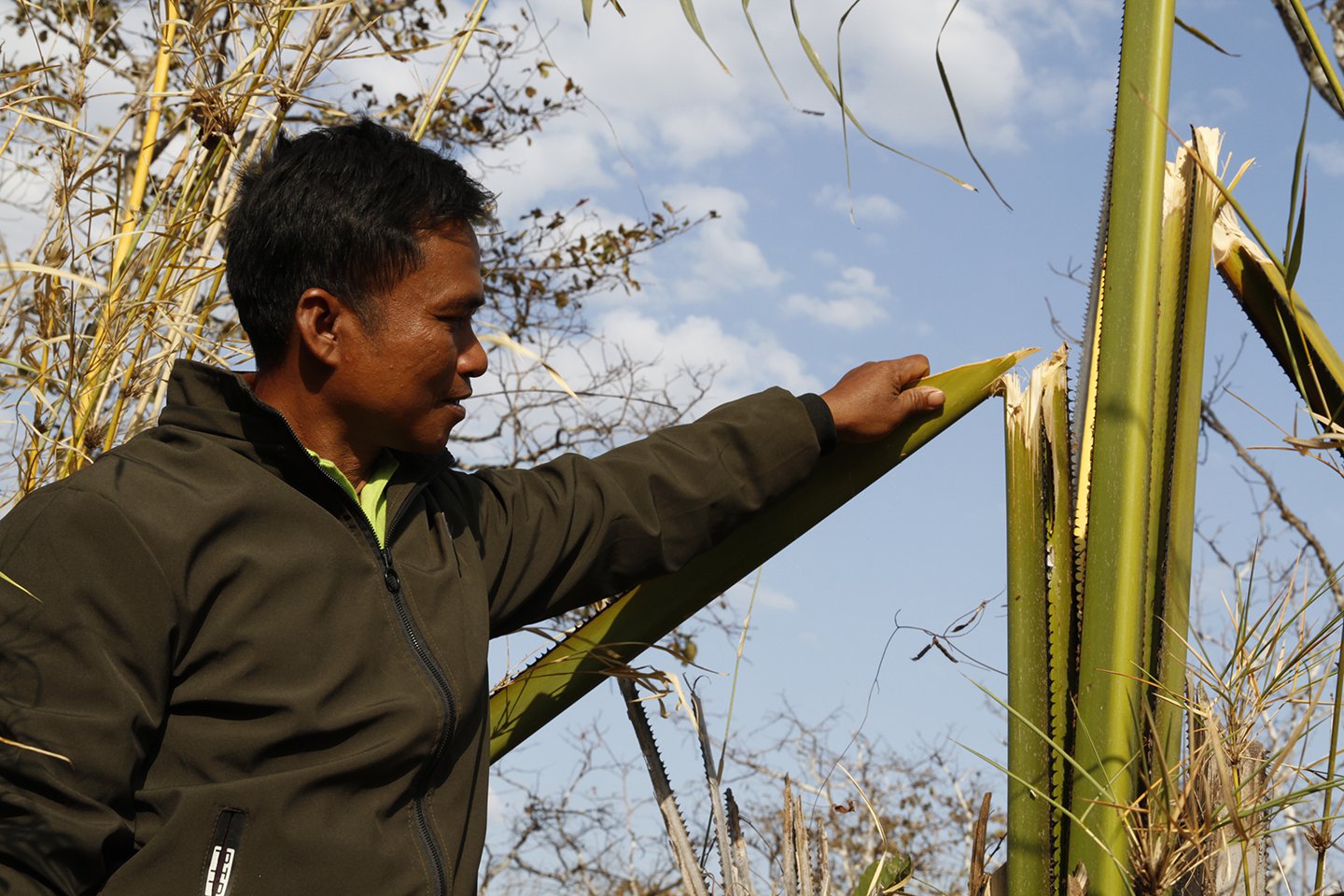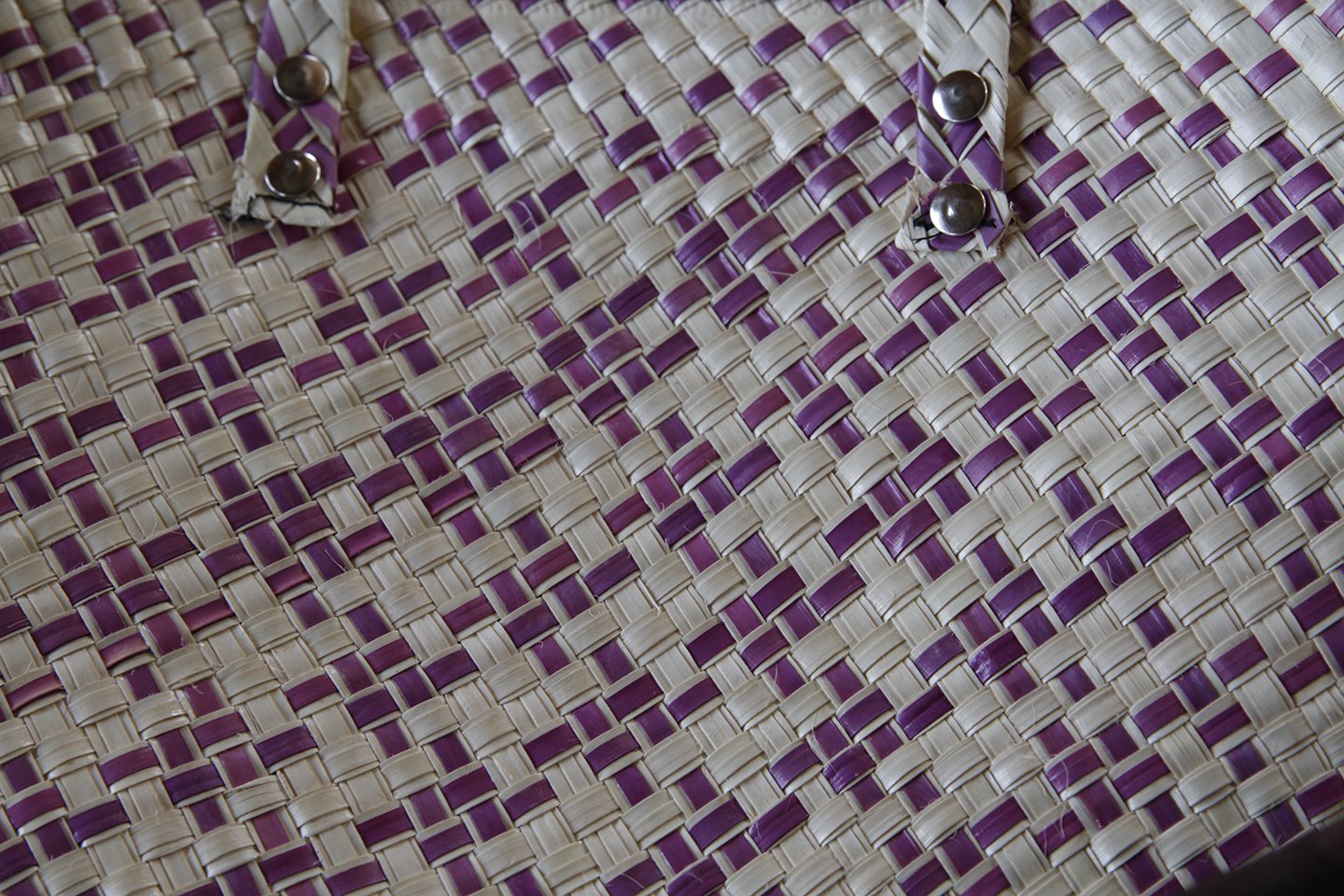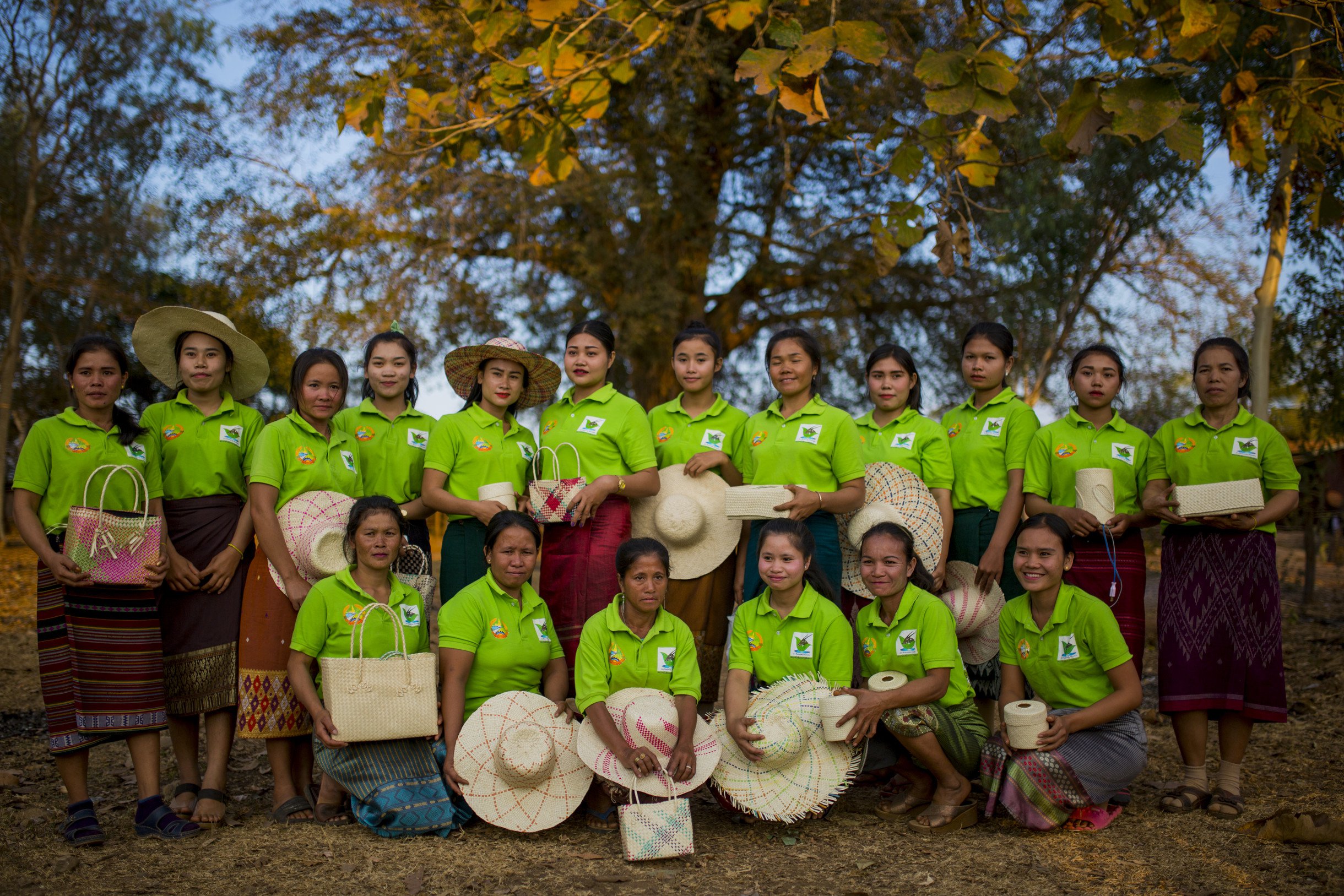An emerging handicraft industry provides an incentive to protect a fragile forest.
Khampian stops on a steep hillside trail to look at a palm tree. A blast of wind throws dust and dry leaves all around him. Someone has broken off some of the tree’s branches and fronds, and they move around in the wind. “People are trying to get at the young growth inside the top of the tree,” Khampian explains.
These young shoots are good to eat, he explains, and there can also be edible snails in that part of the tree. “But they should not be cutting it away like this.”
Khampian is talking about a talipot palm, which grow wild here in Sekong province in southern Lao People’s Democratic Republic (Laos). People in his village, a place called Pakpoun, have 700 hectares (about 1,700 acres) of forest land with a lot of talipot palms. About 70 hectares of this land is set aside for talipot conservation; unfortunately, this tree is growing just outside the protected area.

Talipot palms are valuable, and not just as a food source. People here use the fronds for fencing, and the branches make good fishing poles and chopsticks. They also use the palm fronds to make baskets for sifting rice or to carry things on their backs.
More recently, the Lao Biodiversity Association (LBA) received a grant from Oxfam to provide training for people in three villages in how to use the palm fronds to make hats and handbags. They sell these handicrafts in local and regional markets. The handicraft training is another way to derive value from the trees and provides further incentive to preserve them.
LBA is helping communities conserve the trees and the land where they grow. To protect the environment, LBA trained Khampian and people in two other villages to lead forestry committees that monitor the protected area to ensure no one illegally cuts down any trees. (Like many in Laos, Khampian goes by only one name.)
Craft products
Most of the indigenous people in this part of Lao, including Krieng, Alak, Katou (and some majority Laoloum), rely on growing rice and other vegetables for their food and livelihood. One village chief reported that they can grow enough rice to last the village only about seven months.

That means many farmers struggle to find money for food. So when Monivanh Sengphachan, a married 26-year-old mother of two boys in nearby Kaengluong village, heard that LBA was going to train people on how to make handicrafts, she asked if she could participate.
“I wanted to learn a job skill, to make an income,” she says.
So in early 2018, Sengphachan (everyone in Kaengluong calls her “Lae”) attended the three-day course. Initially, Lae says, “I was not good at it,” but she stuck with it, and soon was forming a group of handicraft producers.
“I practiced and practiced, and I stayed in contact with the trainer in Thailand. Soon I knew more than the others, and I started teaching them. That’s how I became the leader of the group.”
Over the course of 2018, Lae recruited 20 women in Kaengluong to make handicraft items. She says they work with local government officials to find clients. “We go to events, festivals, and fairs; we contact the organizers and try to get orders,” Lae says.
Lae is responsible for mobilizing the team to deliver on time. “It’s challenging to meet the orders when we have a short lead time,” she says. “Sometimes I have to listen to a lot of complaining.”
But there are a lot of positive things about the business she enjoys. “I travel to events, I meet a lot of people. I promote our products and negotiate with people. I tell people how unique our products are…. It’s a new skill I’m developing. I’m more confident now.”

“Things are quite different,” Lae says of her life and how it has changed. “I used to just stay at home and never learned anything new. I did not have a job, apart from selling my labor.”
In the last year she has earned more than 2 million Lao kip (about $235), which she says “is a lot for me, and I used it to buy food, clothes for my kids, and to pay the electric bill.” She estimates that all the handicraft workers together have sold more than 4.6 million kip ($540) worth of handicraft goods in the last year.

A growing concern
For the handicraft business to flourish in villages like Pakpoun and Kaengluong, they will need a supply of raw materials, sustainably harvested from talipot palms. This is an added incentive to protect the forest where they grow, and motivation for people like Khampian to keep an eye on this valuable natural resource.
“People used to just cut the trees down and take all the fruit, but now they don’t,” Khampian says. “Or they would just take the top for food, but that has decreased a lot. People are now more aware of why we need to protect the talipot forest.”

In addition to leading forestry patrols in the protected areas, Khampian educates people about forestry regulations at local festivals and other events. He says now even people who have talipot palms around their homes and in their agricultural fields are protecting the trees.
“People are now more aware of why we need to protect the talipot forest.”
